Perspectives of Quantitative GC-MS, LC-MS, and ICP-MS in the Clinical Medicine Science—The Role of Analytical Chemistry
Abstract
:1. Introduction
2. Methods
3. Results and Discussion
3.1. Evolution of Mass Spectrometry in Science
3.2. Utilization of Mass Spectrometry All over the World
3.3. Utilization of Mass Spectrometry Across Human Life
3.4. Gas Chromatography-Mass Spectrometry and Liquid Chromatography-Mass Spectrometry–Foe or Friends?
3.5. Examples of GC-MS Applications in Clinical Science
3.5.1. Patients with Becker Muscular Dystrophy
3.5.2. The Arginine Test
3.6. ICP-MS in Clinical Science
4. Conclusions and Perspectives
4.1. The Place of Mass Spectrometry in Clinical Science
4.2. Quantitative Analysis, Metabolomics, Proteomics and Regulatory Issues
Funding
Data Availability Statement
Conflicts of Interest
References
- Taya, Y.; Mizunaga, M.; Nakao, S.; Jutanom, M.; Shimizu, N.; Nomura, Y.; Nakagawa, K. Clinical Evaluation Based on a New Approach to Improve the Accuracy of 4β-Hydroxycholesterol Measurement as a Biomarker of CYP3A4 Activity. Molecules 2023, 28, 1576. [Google Scholar] [CrossRef] [PubMed]
- Ozgul, M.; Nesburn, A.; Nasralla, N.; Katz, B.; Taylan, E.; Kuppermann, B.; Kenney, M. Stability Determination of Intact Humanin-G with Characterizations of Oxidation and Dimerization Patterns. Biomolecules 2023, 13, 515. [Google Scholar] [CrossRef] [PubMed]
- Wei, D.; Horton, K.; Chen, J.; Dong, L.; Chen, S.; Abdul-Hadi, K.; Zhang, T.; Casson, C.; Shaw, M.; Shiraishi, T.; et al. Development of a Highly Sensitive Hybrid LC/MS Assay for the Quantitative Measurement of CTLA-4 in Human T Cells. Molecules 2023, 28, 3311. [Google Scholar] [CrossRef] [PubMed]
- Molteni, L.; Charlier, B.; Izzo, V.; Coglianese, A.; Conti, V.; Eleopra, R.; Cilia, R.; Capelli, C.; D’Urso, A.; de Grazia, U. Development and Validation of a New LC-MS/MS Bioanalytical Method for the Simultaneous Determination of Levodopa, Levodopa Methyl Ester, and Carbidopa in Human Plasma Samples. Molecules 2023, 28, 4264. [Google Scholar] [CrossRef]
- Gillespie, K.; Pirnie, R.; Mesaros, C.; Blair, I. Cisplatin Dependent Secretion of Immunomodulatory High Mobility Group Box 1 (HMGB1) Protein from Lung Cancer Cells. Biomolecules 2023, 13, 1335. [Google Scholar] [CrossRef]
- Onigbinde, S.; Reyes, C.; Fowowe, M.; Daramola, O.; Atashi, M.; Bennett, A.; Mechref, Y. Variations in O-Glycosylation Patterns Influence Viral Pathogenicity, Infectivity, and Transmissibility in SARS-CoV-2 Variants. Biomolecules 2023, 13, 1467. [Google Scholar] [CrossRef]
- Guo, H.; Wang, G.; Huang, W.; Li, L.; Bai, Y.; Wang, H.; Gao, L. The Mechanism of Hepatic Encephalopathy Induced by Thioacetamide Based on Metabolomics and Proteomics: A Preliminary Study. Int. J. Mol. Sci. 2024, 25, 284. [Google Scholar] [CrossRef]
- Kim, H.; Jung, S.; Gulyamov, S.; Lee, H.; Boyjigitov, O.; Lee, Y. HPLC-MS/MS Analysis for Sphingosine 1-Phosphate after the Dephosphorylation by Hydrogen Fluoride. Separations 2024, 11, 34. [Google Scholar] [CrossRef]
- Molteni, L.; Charlier, B.; Coglianese, A.; Izzo, V.; Assenza, G.; Menna, P.; de Grazia, U.; D’Urso, A. Quantitative Analysis of Cenobamate and Concomitant Anti-Seizure Medications in Human Plasma via Ultra-High Performance Liquid Chromatography–Tandem Mass Spectrometry. Molecules 2024, 29, 884. [Google Scholar] [CrossRef]
- Casals, G.; Ballesteros, M.; Zamora, A.; Martínez, I.; Fernández-Varo, G.; Mora, M.; Hanzu, F.; Morales-Ruiz, M. LC-HRMS and GC-MS Profiling of Urine Free Cortisol, Cortisone, 6Β-, and 18-Hydroxycortisol for the Evaluation of Glucocorticoid and Mineralocorticoid Disorders. Biomolecules 2024, 14, 558. [Google Scholar] [CrossRef]
- Posma, R.; Bakker, S.; Nijsten, M.; Touw, D.; Tsikas, D. Comprehensive GC-MS Measurement of Amino Acids, Metabolites, and Malondialdehyde in Metformin-Associated Lactic Acidosis at Admission and during Renal Replacement Treatment. J. Clin. Med. 2024, 13, 3692. [Google Scholar] [CrossRef] [PubMed]
- Kośliński, P.; Rzepiński, Ł.; Koba, M.; Maciejek, Z.; Kowalewski, M.; Daghir-Wojtkowiak, E. Comparative Analysis of Serum Amino Acid Profiles in Patients with Myasthenia gravis and Multiple Sclerosis. J. Clin. Med. 2024, 13, 4083. [Google Scholar] [CrossRef] [PubMed]
- Meinarovich, P.; Pautova, A.; Zuev, E.; Sorokina, E.; Chernevskaya, E.; Beloborodova, N. An Integrated Approach Based on Clinical Data Combined with Metabolites and Biomarkers for the Assessment of Post-Operative Complications after Cardiac Surgery. J. Clin. Med. 2024, 13, 5054. [Google Scholar] [CrossRef] [PubMed]
- March, R.E.; Hughes, R.J.; Todd, J.F. Quadrupole Storage Mass Spectrometry; Wiley Interscience: New York, NY, USA, 1989. [Google Scholar]
- Oehme, M. Praktische Einführung in der GC/MS-Analytik mit Quadrupolen: Grundlagen und Anwednungen; Hüthig GmbH: Heidelberg, Germany, 1996; ISBN 3-7785-2416-x. [Google Scholar]
- Hübschmann, H.J. Handbook of GC/MS: Fundamentals and Applications, 2nd ed.; Wiley VCH: Weinheim, Germany, 2009; ISBN 978-3-527-31427-0. [Google Scholar]
- de Hoffmann, E.; Vincent Stroobant, V. Mass Spectrometry: Principles and Applications, 2nd ed.; John Wiley & Sons: Toronto, ON, Canada, 2003; p. 65. ISBN 978-0-471-48566-7. [Google Scholar]
- Teschl, G. Ordinary Differential Equations and Dynamical Systems; American Mathematical Society: Providence, RI, USA, 2012; ISBN 978-0-8218-8328-0. [Google Scholar]
- Yost, R.A.; Enke, C.G. Selected ion fragmentation with a tandem quadrupole mass spectrometer. J. Am. Chem. Soc. 1978, 100, 2274. [Google Scholar] [CrossRef]
- Eveleigh, L.J.; Ducauze, C.J. Optimization of the dwell-time for the quantitative analysis by gas chromatography-mass spectrometry. J. Chromatogr. A 1997, 765, 241–245. [Google Scholar] [CrossRef]
- Brenton, A.G.; Godfrey, A.R. Accurate mass measurement: Terminology and treatment of data. J. Am. Soc. Mass. Spectrom. 2010, 21, 1821–1835. [Google Scholar] [CrossRef]
- Murray, K.K.; Boyd, R.K.; Eberlin, M.N.; Langley, G.J.; Li, L.; Naito, Y. Definitions of terms relating to mass spectrometry (IUPAC Recommendations 2013). Pure Appl. Chem. 2013, 85, 1515–1609. [Google Scholar] [CrossRef]
- Clases, D.; Gonzalez de Vega, R. Facets of ICP-MS and their potential in the medical sciences-Part 1: Fundamentals, stand-alone and hyphenated techniques. Anal. Bioanal. Chem. 2022, 414, 7337–7361. [Google Scholar] [CrossRef]
- Justen, P.T.; Beavers, C.A.; Forster, A.L.B.; Richardson, S.D. Better Together: Tandem Mass Spectrometry Achieves up to 50 Times Lower Quantification of 62 Disinfection Byproducts in Drinking Water. Anal. Chem. 2024, 96, 11226–11231. [Google Scholar] [CrossRef]
- Tsikas, D.; Zoerner, A.A. Analysis of eicosanoids by LC-MS/MS and GC-MS/MS: A historical retrospect and a discussion. J. Chromatogr. B Analyt Technol. Biomed. Life Sci. 2014, 964, 79–88. [Google Scholar] [CrossRef]
- Tsikas, D. Quantitative analysis of eicosanoids in biological samples by LC-MS/MS: Mission. accomplished? J. Chromatogr. B Analyt Technol. Biomed. Life Sci. 2016, 1012, 211–214. [Google Scholar] [CrossRef] [PubMed]
- Tsikas, D. Mass Spectrometry-Based Evaluation of the Bland-Altman Approach: Review, Discussion, and Proposal. Molecules 2023, 28, 4905. [Google Scholar] [CrossRef] [PubMed]
- Zoerner, A.A.; Gutzki, F.M.; Suchy, M.T.; Beckmann, B.; Engeli, S.; Jordan, J.; Tsikas, D. Targeted stable-isotope dilution GC-MS/MS analysis of the endocannabinoid anandamide and other fatty acid ethanol amides in human plasm. J. Chromatogr. B 2009, 877, 2909–2923. [Google Scholar] [CrossRef] [PubMed]
- Zoerner, A.A.; Batkai, S.; Suchy, M.T.; Gutzki, F.M.; Engeli, S.; Jordan, J.; Tsikas, D. Simultaneous UPLC-MS/MS quantification of the endocannabinoids 2-arachidonoyl glycerol (2AG), 1-arachidonoyl glycerol (1AG), and anandamide in human plasma: Minimization of matrix-effects, 2AG/1AG isomerization and degradation by toluene solvent extraction. J. Chromatogr. B 2012, 877, 161–171. [Google Scholar] [CrossRef] [PubMed]
- Baskal, S.; Bollenbach, A.; Henzi, B.; Hafner, P.; Fischer, D.; Tsikas, D. Stable-Isotope Dilution GC-MS Measurement of Metformin in Human Serum and Urine after Derivatization with Pentafluoropropionic Anhydride and Its Application in Becker Muscular Dystrophy Patients Administered with Metformin, l-Citrulline, or Their Combination. Molecules 2022, 27, 3850. [Google Scholar] [CrossRef]
- Hanff, E.; Hafner, P.; Bollenbach, A.; Bonati, U.; Kayacelebi, A.A.; Fischer, D.; Tsikas, D. Effects of single and combined metformin and L-citrulline supplementation on L-arginine-related pathways in Becker muscular dystrophy patients: Possible biochemical and clinical implications. Amino Acids 2018, 50, 1391–1406. [Google Scholar] [CrossRef]
- Langen, J.; Kayacelebi, A.A.; Beckmann, B.; Weigt-Usinger, K.; Carmann, C.; Hörster, I.; Lilienthal, E.; Richter-Unruh, A.; Tsikas, D.; Lücke, T. Homoarginine (hArg) and asymmetric dimethylarginine (ADMA) in short stature children without and with growth hormone deficiency: hArg and ADMA are involved differently in growth in the childhood. Amino Acids 2015, 47, 1875–1883. [Google Scholar] [CrossRef]
- Tsikas, D. A critical review and discussion of analytical methods in the L-arginine/nitric oxide area of basic and clinical research. Anal. Biochem. 2008, 379, 139–163. [Google Scholar] [CrossRef]
- Cabaña-Muñoz, M.; Parmigiani-Izquierdo, J.; Camacho Alonso, F.; Merino, J. Increased Systemic Malondialdehyde Levels and Decreased Mo/Co, Co/Fe2+ Ratios in Patients with Long-Term Dental Titanium Implants and Amalgams. J. Clin. Med. 2019, 8, 86. [Google Scholar] [CrossRef]
- Radtke, A.; Grodzicka, M.; Ehlert, M.; Jędrzejewski, T.; Wypij, M.; Golińska, P. “To Be Microbiocidal and Not to Be Cytotoxic at the Same Time…”—Silver Nanoparticles and Their Main Role on the Surface of Titanium Alloy Implants. J. Clin. Med. 2019, 8, 334. [Google Scholar] [CrossRef]
- Christiansen, R.; Münch, H.; Bonefeld, C.; Thyssen, J.; Sloth, J.; Geisler, C.; Søballe, K.; Jellesen, M.; Jakobsen, S. Cytokine Profile in Patients with Aseptic Loosening of Total Hip Replacements and Its Relation to Metal Release and Metal Allergy. J. Clin. Med. 2019, 8, 1259. [Google Scholar] [CrossRef] [PubMed]
- Sotomayor, C.; Groothof, D.; Vodegel, J.; Gacitúa, T.; Gomes-Neto, A.; Osté, M.; Pol, R.; Ferreccio, C.; Berger, S.; Chong, G.; et al. Circulating Arsenic is Associated with Long-Term Risk of Graft Failure in Kidney Transplant Recipients: A Prospective Cohort Study. J. Clin. Med. 2020, 9, 417. [Google Scholar] [CrossRef] [PubMed]
- Dolar-Szczasny, J.; Flieger, J.; Kowalska, B.; Majerek, D.; Tatarczak-Michalewska, M.; Zakrocka, I.; Załuska, W.; Rejdak, R. Hemodialysis Effect on the Composition of the Eye Fluid of Cataract Patients. J. Clin. Med. 2021, 10, 5485. [Google Scholar] [CrossRef] [PubMed]
- Chen, M.; Wu, H.; Li, Z.; Ge, S.; Zhao, L.; Zhang, X.; Qu, Y. Intracranial-Pressure-Monitoring-Assisted Management Associated with Favorable Outcomes in Moderate Traumatic Brain Injury Patients with a GCS of 9–11. J. Clin. Med. 2022, 11, 6661. [Google Scholar] [CrossRef] [PubMed]
- Paschaei, N.; Müller, W.; Schmidt, F.; Hüsker, K.; von Baehr, V.; Pandis, N.; Jost-Brinkmann, P.; Bartzela, T. Unveiling the Role of Metal Ion Concentration versus Immune Sensitization in Orthodontic Patients—A Long-Term Prospective Evaluation. J. Clin. Med. 2024, 13, 4545. [Google Scholar] [CrossRef]
- Duncan, M.W. Good mass spectrometry and its place in good science. J. Mass. Spectrom. 2012, 47, 795–809. [Google Scholar] [CrossRef]
- Karayannis, M.I.; Efstathiou, C.E. Significant steps in the evolution of analytical chemistry is the today’s analytical chemistry only chemistry? Talanta 2012, 102, 7–15. [Google Scholar] [CrossRef]
- Okahashi, N.; Maeda, K.; Kawana, S.; Iida, J.; Shimizu, H.; Matsuda, F. Sugar phosphate analysis with baseline separation and soft ionization by gas chromatography-negative chemical ionization-mass spectrometry improves flux estimation of bidirectional reactions in cancer cells. Metab. Eng. 2019, 51, 43–49. [Google Scholar] [CrossRef]
- Yin, R.; Mo, J.; Lu, M.; Wang, H. Detection of human urinary 5-hydroxymethylcytosine by stable isotope dilution HPLC-MS/MS analysis. Anal. Chem. 2015, 87, 1846–1852. [Google Scholar] [CrossRef]
- Ellison, E.M.; Abner, E.L.; Lovell, M.A. Multiregional analysis of global 5-methylcytosine and 5-hydroxymethylcytosine throughout the progression of Alzheimer’s disease. J. Neurochem. 2017, 140, 383–394. [Google Scholar] [CrossRef]
- van der Gugten, J.G. Tandem mass spectrometry in the clinical laboratory: A tutorial Overview. Clin. Mass. Spectrom. 2020, 15, 36–43. [Google Scholar] [CrossRef]
- Tsikas, D. GC-MS and GC-MS/MS measurement of malondialdehyde (MDA) in clinical studies: Pre-analytical and clinical considerations. J. Mass. Spectrom. Adv. Clin. Lab. 2023, 30, 10–24. [Google Scholar] [CrossRef] [PubMed]
- Jacob, K.; Vogt, W.; Knedel, M.; Schwertfeger, G. Quantitation of adrenaline and noradrenaline from human plasma by combined gas chromatography-high-resolution mass fragmentography. J. Chromatogr. 1978, 146, 221–226. [Google Scholar] [CrossRef] [PubMed]
- Nagasawa, M.; Kashimoto, M.; Sugawara, M.; Kimura, Y. Determination of the beta-blocker carteolol in human plasma by a sensitive gas chromatographic-negative-ion chemical ionization high-resolution mass spectrometric method. J. Chromatogr. B Biomed. Appl. 1995, 673, 294–298. [Google Scholar] [CrossRef]
- Nishikawa, M.; Hishinuma, T.; Nagata, K.; Koseki, Y.; Suzuki, K.; Mizugaki, M. Effects of eicosapentaenoic acid (EPA) on prostacyclin production in diabetics: GC/MS analysis of PGI2 and PGI3 levels. Methods Find. Exp. Clin. Pharmacol. 1997, 19, 429–433. [Google Scholar]
- Kokkonen, J.; Leinonen, A.; Tuominen, J.; Seppälä, T. Comparison of sensitivity between gas chromatography-low-resolution mass spectrometry and gas chromatography-high-resolution mass spectrometry for determining metandienone metabolites in urine. J. Chromatogr. B Biomed. Sci. Appl. 1999, 734, 179–189. [Google Scholar] [CrossRef]
- Atzler, D.; Appelbaum, S.; Cordts, K.; Ojeda, F.M.; Wild, P.S.; Münzel, T.; Blankenberg, S.; Böger, R.H.; Blettner, M.; Beutel, M.E.; et al. Reference intervals of plasma homoarginine from the German Gutenberg Health Study. Clin. Chem. Lab. Med. 2016, 54, 1231–1237. [Google Scholar] [CrossRef]
- Yamamoto, H.; Kondo, K.; Tanaka, T.; Muramatsu, T.; Yoshida, H.; Imaizumi, A.; Nagao, K.; Noguchi, Y.; Miyano, H. Reference intervals for plasma-free amino acid in a Japanese population. Ann. Clin. Biochem. 2016, 53, 357–364. [Google Scholar] [CrossRef]
- Tsikas, D. Urinary Dimethylamine (DMA) and Its Precursor Asymmetric Dimethylarginine (ADMA) in Clinical Medicine, in the Context of Nitric Oxide (NO) and Beyond. J. Clin. Med. 2020, 9, 1843. [Google Scholar] [CrossRef]
- Yan, X.; Yuan, S.; Yu, Z.; Zhao, Y.; Zhang, S.; Wu, H.; Yan, H.; Xiang, P. Development of an LC-MS/MS method for determining 5-MeO-DIPT in dried urine spots and application to forensic cases. J. Forensic Leg. Med. 2020, 72, 101963. [Google Scholar] [CrossRef]
- Jo, J.; Son, Y.; Lee, J.; Lee, D.; Shin, J.H.; Ahn, Y.G. Gas chromatography-triple quadrupole mass spectrometry as a cost-effective method for the determination of polychlorinated dibenzo-p-dioxins and furans in contaminated soils. Chemosphere 2022, 308, 136286. [Google Scholar] [CrossRef] [PubMed]
- Manz, K.E.; Feerick, A.; Braun, J.M.; Feng, Y.L.; Hall, A.; Koelmel, J.; Manzano, C.; Newton, S.R.; Pennell, K.D.; Place, B.J.; et al. Non-targeted analysis (NTA) and suspect screening analysis (SSA): A review of examining the chemical exposome. J. Expo. Sci. Environ. Epidemiol. 2023, 33, 524–536. [Google Scholar] [CrossRef] [PubMed]
- Martínez Brito, D.; Leogrande, P.; Jardines, D.; de la Torre, X.; Botrè, F. Simultaneous quantification of endogenous biomarkers and detection of testosterone esters in human serum using gas chromatography-high-resolution mass spectrometry. Rapid Commun. Mass. Spectrom. 2024, 38, e9685. [Google Scholar] [CrossRef] [PubMed]
- Mosley, J.D.; Schock, T.B.; Beecher, C.W.; Dunn, W.B.; Kuligowski, J.; Lewis, M.R.; Theodoridis, G.; Ulmer Holland, C.Z.; Vuckovic, D.; Wilson, I.D.; et al. Establishing a framework for best practices for quality assurance and quality control in untargeted metabolomics. Metabolomics 2024, 20, 20. [Google Scholar] [CrossRef]
- Meier-Augenstein, W.; Schimmelmann, A. A guide for proper utilisation of stable isotope reference materials. Isot. Environ. Health Stud. 2019, 55, 113–128. [Google Scholar] [CrossRef]
- Cheng, W.; Wu, S.; Yuan, Z.; Hu, W.; Yu, X.; Kang, N.; Wang, Q.; Zhu, M.; Xia, K.; Yang, W.; et al. Pharmacokinetics, Tissue Distribution, and Excretion Characteristics of a Radix polygoni Multiflori Extract in Rats. Front. Pharmacol. 2022, 13, 827668. [Google Scholar] [CrossRef]
- Yu, X.; Xia, K.; Wu, S.; Wang, Q.; Cheng, W.; Ji, C.; Yang, W.; Kang, C.; Yuan, Z.; Li, Y. Simultaneous determination and pharmacokinetic study of six components in beagle dog plasma by UPLC-MS/MS after oral administration of Astragalus membranaceus aqueous extract. Biomed. Chromatogr. 2022, 36, e5488. [Google Scholar] [CrossRef]
- Chen, S.; Lai, W.; Li, Y.; Liu, Y.; Jiang, J.; Li, X.; Jiang, G.; Wang, H. Aberrant DNA N6 -methyladenine incorporation via adenylate kinase 1 is suppressed by ADAL deaminase-dependent 2′-deoxynucleotide pool sanitation. EMBO J. 2023, 42, e113684. [Google Scholar] [CrossRef]
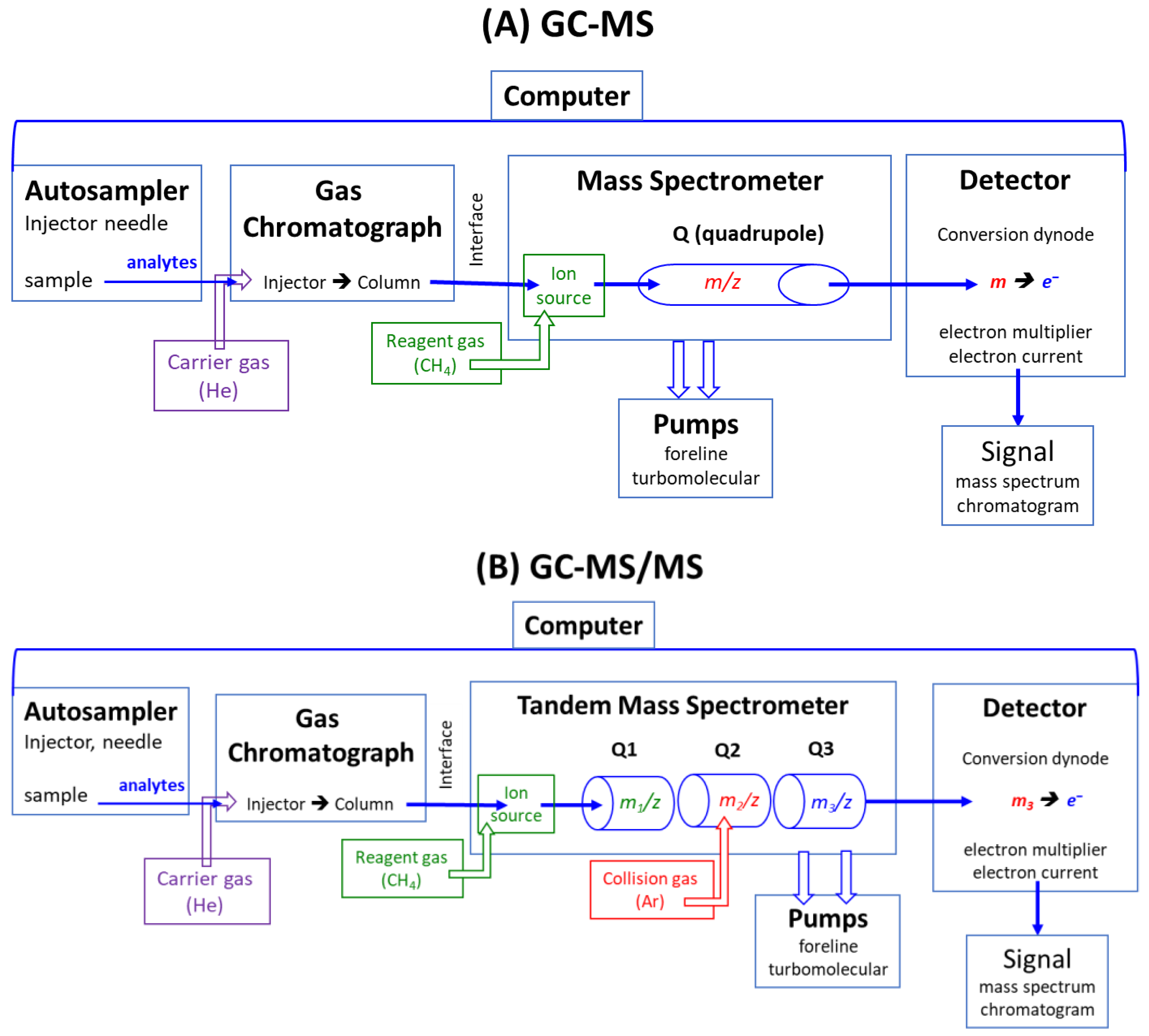

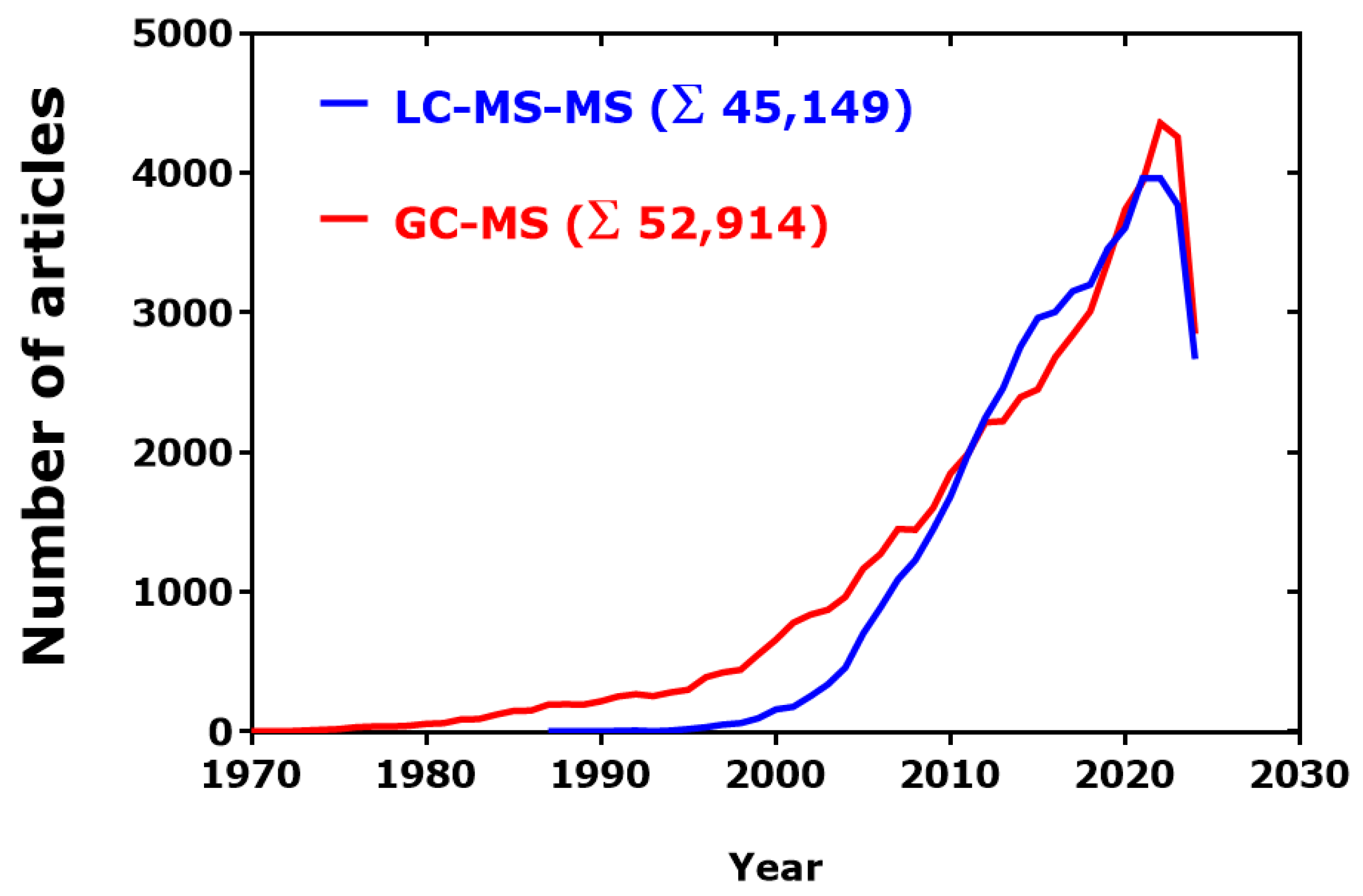
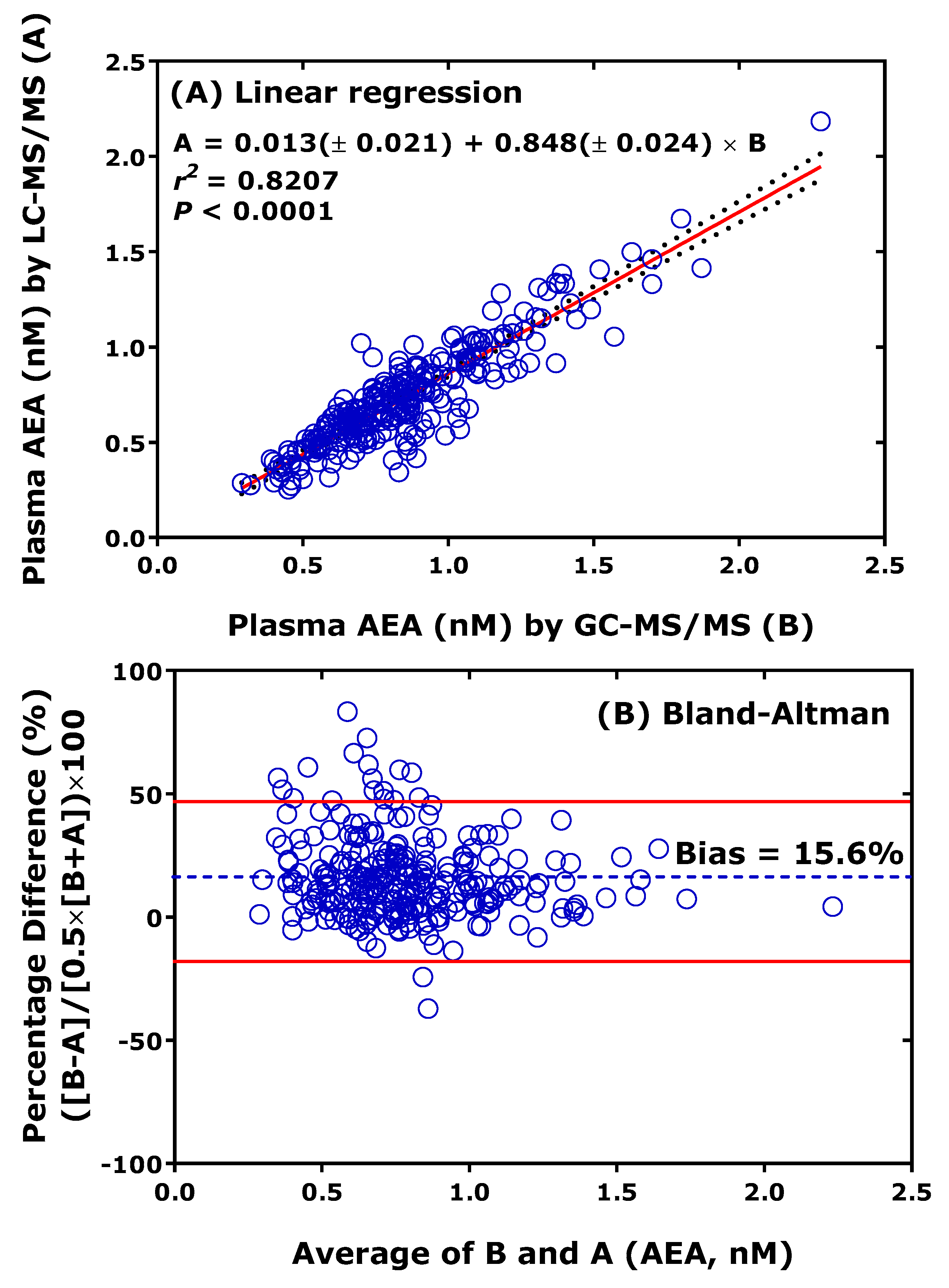
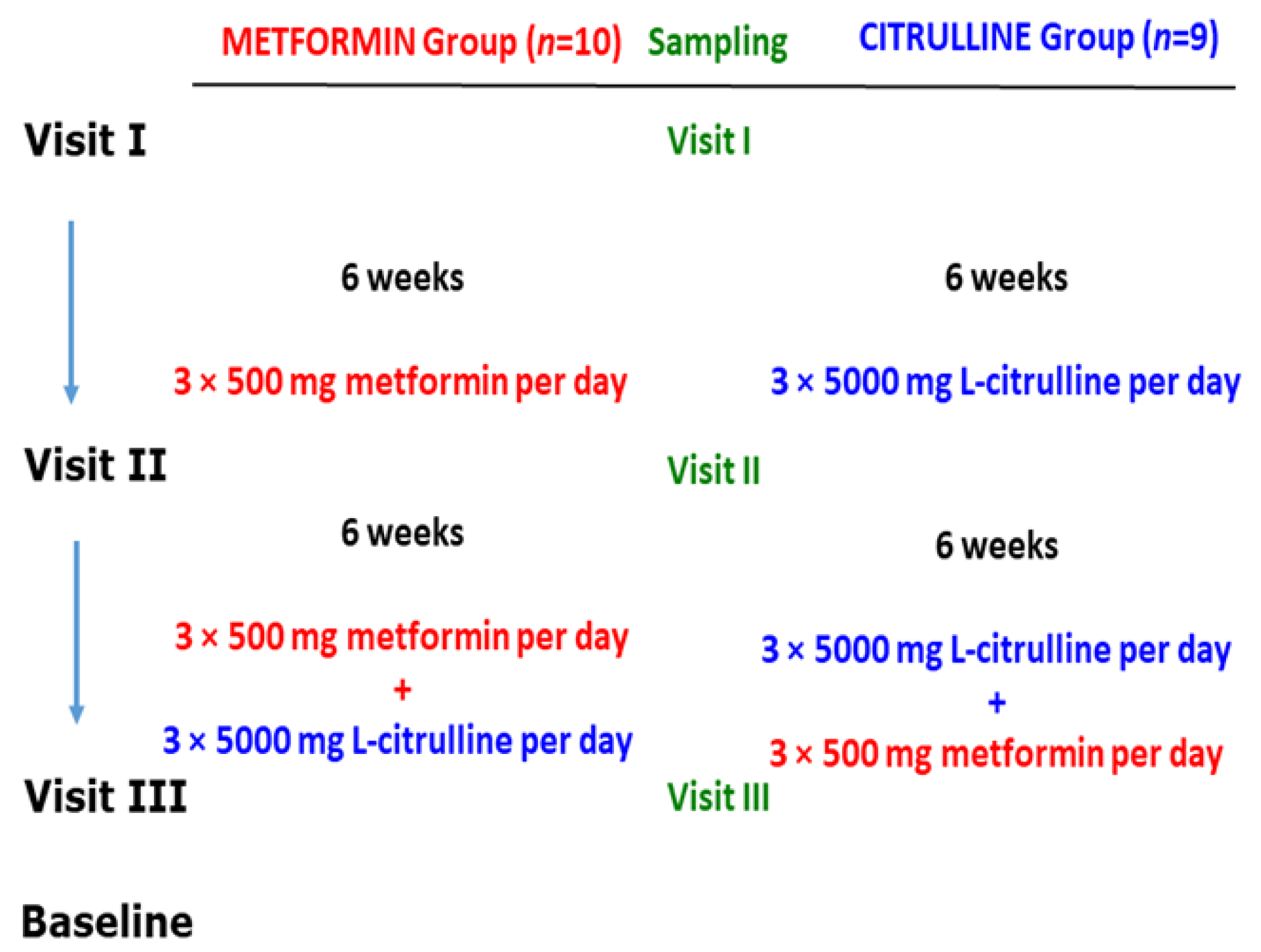
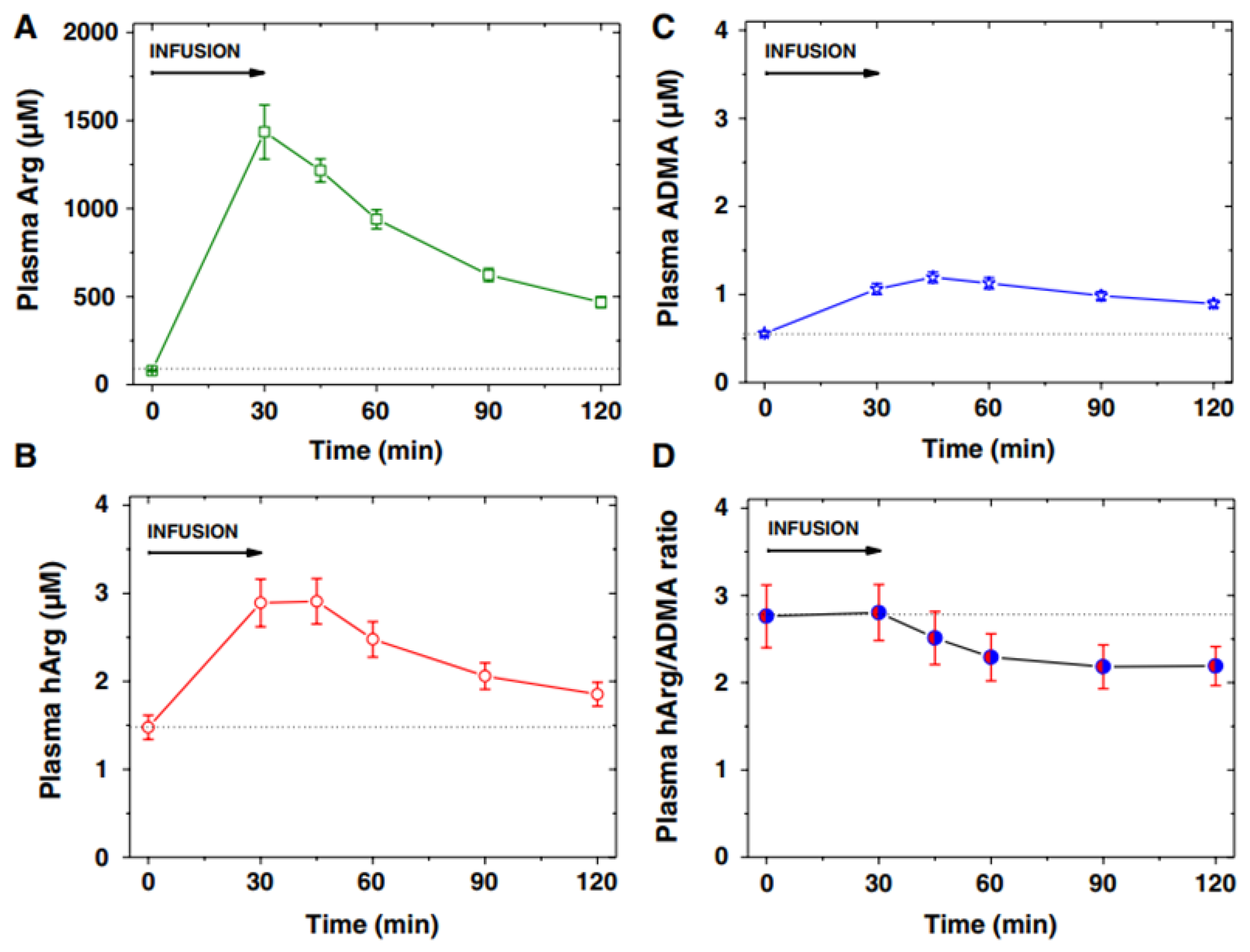
| Continent, Country | GC-MS | LC-MS | ICP-MS |
|---|---|---|---|
| AFRICA | 1855 | 1305 | 286 |
| AUSTRALIA | 2110 | 2632 | 382 |
| BRAZIL | 2793 | 2597 | 488 |
| CANADA | 3210 | 4002 | 509 |
| CHINA | 16,863 | 23,018 | 2886 |
| BELGIUM | 1369 | 1879 | 254 |
| FRANCE | 3650 | 3870 | 707 |
| GERMANY | 6662 | 8016 | 1099 |
| GREECE | 930 | 897 | 96 |
| ITALY | 5371 | 4819 | 688 |
| THE NETHERLANDS | 1680 | 2974 | 136 |
| SPAIN | 4674 | 4596 | 956 |
| UNITED KINGDOM | 1674 | 2571 | 295 |
| INDIA | 4473 | 4436 | 362 |
| JAPAN | 5165 | 6251 | 715 |
| REPUBLIC OF KOREA | 1741 | 2266 | 212 |
| RUSSIA | 545 | 591 | 190 |
| SINGAPORE | 448 | 767 | 51 |
| TURKIYE | 1325 | 1269 | 308 |
| USA | 12,198 | 18,822 | 1626 |
| SEARCH TERM in PubMed | No. Articles |
|---|---|
| gas chromatography mass spectrometry | 89,871 |
| gas chromatography mass spectrometry humans | 32,556 |
| gas chromatography mass spectrometry humans AND | |
| ATTENTION-DEFICITE HYPERACTIVITY DISORDER (ADHD) | 24 |
| ALLERGIC ASTHMA | 27 |
| ACUTE RESPIRATORY DISTRESS SYNDROME (ARDS) | 43 |
| ATOPIC DERMATITIS | 34 |
| ATOPIC DISEASE | 21 |
| BECKER MUSCULAR DYSTROPHY | 6 |
| CORONARY ARTERY DISEASE | 77 |
| COVID-19 | 146 |
| CYSTIC FIBROSIS | 76 |
| DIABETES | 953 |
| DUCHENNE MUSCULAR DYSTROPHY | 6 |
| END-STAGE KIDNEY DISEASE | 88 |
| END-STAGE LIVER DISEASE | 12 |
| ERECTILE DYSFUNCTION | 19 |
| EXERCISE PHYSICAL | 89 |
| FETAL GROWTH RESTRICTION | 40 |
| GROWTH HORMONE DEFICIENCY | 22 |
| HELICOBACTER PYLORI | 86 |
| HYPERCHOLESTEROLEMIA | 113 |
| HYPOGONADISM | 21 |
| LACTATION | 214 |
| LIVER DISEASE | 678 |
| NEONATES | 1298 |
| NUTRITION | 2185 |
| OCCUPATIONAL MEDICINE | 522 |
| PERIPHERAL ARTERY OCCLUSIVE DISEASE | 9 |
| PHENYLKETONURIA | 56 |
| PREECLAMPSIA | 46 |
| PSORIASIS | 57 |
| RHEUMATIC DISEASE | 92 |
| ZELLWEGER SYNDROME | 62 |
| Search Term | Period | Total | 2024 + 2025 |
|---|---|---|---|
| LC-MS | 1970–2025 | 111,412 | 6270 |
| GC-MS | 1970–2025 | 101,580 | 3967 |
| GC-MS AND Amino acids | 1968–2025 | 7123 | 216 |
| Anti-doping | 1987–2025 | 279 | 9 |
| Biomarkers | 1972–2024 | 5571 | 241 |
| Drugs | 1970–2025 | 14,038 | 595 |
| Eicosanoids | 1969–2024 | 2138 | 9 |
| Fatty acids | 1966–2025 | 13,288 | 468 |
| Food | 1968–2024 | 23,526 | 1345 |
| Forensic | 1971–2024 | 4817 | 138 |
| Herbicides | 1971–2024 | 1202 | 28 |
| Hormones | 1968–2024 | 5959 | 127 |
| Lipids | 1966–2024 | 25,378 | 818 |
| Nutrition | 1975–2024 | 5542 | 381 |
| Occupational | 1975–2025 | 1806 | 57 |
| Pesticides | 1970–2024 | 8068 | 267 |
| Postmortem | 1971–2024 | 1268 | 28 |
| Supplements | 1973–2024 | 1809 | 93 |
| Vitamins | 1968–2024 | 2225 | 60 |
| MET Group (n = 10) | CITR Group (n = 9) | |||||
|---|---|---|---|---|---|---|
| Analyte | Baseline | Met | Met + Cit | Baseline | Cit | Cit + Met |
| hArg | 1.68 ± 0.60 | 1.31 ± 0.48 * | 2.07 ± 0.45 *** | 1.61 ± 0.35 | 2.70 ± 0.76 ** | 2.46 ± 1.00 |
| GAA | 2.00 ± 0.37 | 1.54 ± 0.46 ** | 2.55 ± 1.38 * | 1.94 ± 0.26 | 2.87 ± 0.86 * | 2.80 ± 1.60 |
| Arg | 129 ± 35.1 | 100.4 ± 22.8 * | 174 ± 82.6 * | 120 ± 19.5 | 220 ± 57.4 ** | 208 ± 86.3 |
| ADMA | 0.526 ± 0.142 | 0.496 ± 0.066 | 0.512 ± 0.095 | 0.528 ± 0.049 | 0.594 ± 0.087 * | 0.600 ± 0.109 |
| Nitrate | 55.2 ± 17.1 | 50.0 ± 8.04 | 50.4 ± 9.52 | 56.6 ± 13.3 | 56.2 ± 20.1 | 60.3 ± 21.04 |
| Creatinine | 62.1 ± 18.0 | 58.3 ± 13.5 | 59.0 ± 13.9 | 49.8 ± 11.0 | 59.1 ± 20.5 | 52.2 ± 12.5 |
| MDA | 0.989 ± 0.350 | 0.780 ± 0.190 * | 0.936 ± 0.370 | 0.884 ± 0.189 | 1.173 ± 0.404 | 1.081 ± 0.636 |
| GAA/hArg | 1.34 ± 0.51 | 1.34 ± 0.68 | 1.23 ± 0.56 | 1.26 ± 0.32 | 1.13 ± 0.46 | 1.17 ± 0.53 |
| hArg/ADMA | 3.19 ± 1.42 | 2.68 ± 1.07 | 4.15 ± 1.21 *** | 3.07 ± 0.66 | 4.52 ± 0.92 ** | 4.07 ± 1.31 |
| Nitrate/nitrite | 20.6 ± 7.22 | 20.2 ± 5.15 | 20.7 ± 3.73 | 23.9 ± 5.10 | 22.1 ± 8.92 | 24.9 ± 8.6 |
Disclaimer/Publisher’s Note: The statements, opinions and data contained in all publications are solely those of the individual author(s) and contributor(s) and not of MDPI and/or the editor(s). MDPI and/or the editor(s) disclaim responsibility for any injury to people or property resulting from any ideas, methods, instructions or products referred to in the content. |
© 2024 by the author. Licensee MDPI, Basel, Switzerland. This article is an open access article distributed under the terms and conditions of the Creative Commons Attribution (CC BY) license (https://creativecommons.org/licenses/by/4.0/).
Share and Cite
Tsikas, D. Perspectives of Quantitative GC-MS, LC-MS, and ICP-MS in the Clinical Medicine Science—The Role of Analytical Chemistry. J. Clin. Med. 2024, 13, 7276. https://doi.org/10.3390/jcm13237276
Tsikas D. Perspectives of Quantitative GC-MS, LC-MS, and ICP-MS in the Clinical Medicine Science—The Role of Analytical Chemistry. Journal of Clinical Medicine. 2024; 13(23):7276. https://doi.org/10.3390/jcm13237276
Chicago/Turabian StyleTsikas, Dimitrios. 2024. "Perspectives of Quantitative GC-MS, LC-MS, and ICP-MS in the Clinical Medicine Science—The Role of Analytical Chemistry" Journal of Clinical Medicine 13, no. 23: 7276. https://doi.org/10.3390/jcm13237276
APA StyleTsikas, D. (2024). Perspectives of Quantitative GC-MS, LC-MS, and ICP-MS in the Clinical Medicine Science—The Role of Analytical Chemistry. Journal of Clinical Medicine, 13(23), 7276. https://doi.org/10.3390/jcm13237276








